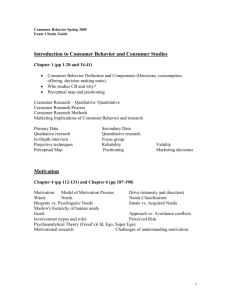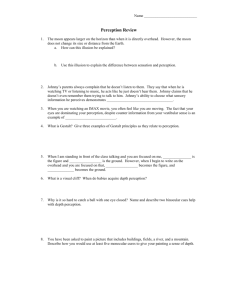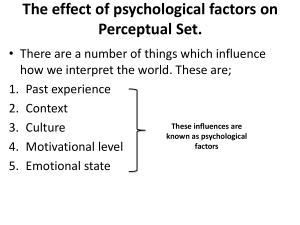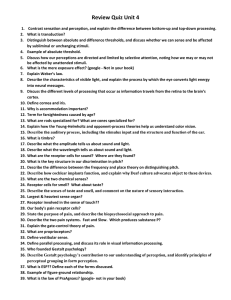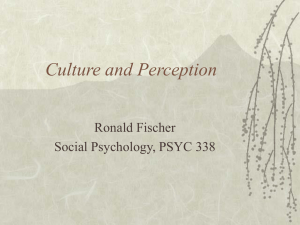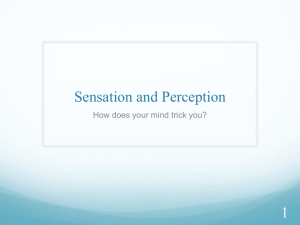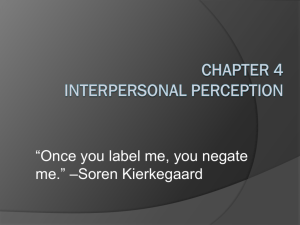Visual Perception Psych 1 Outcome 2010
advertisement
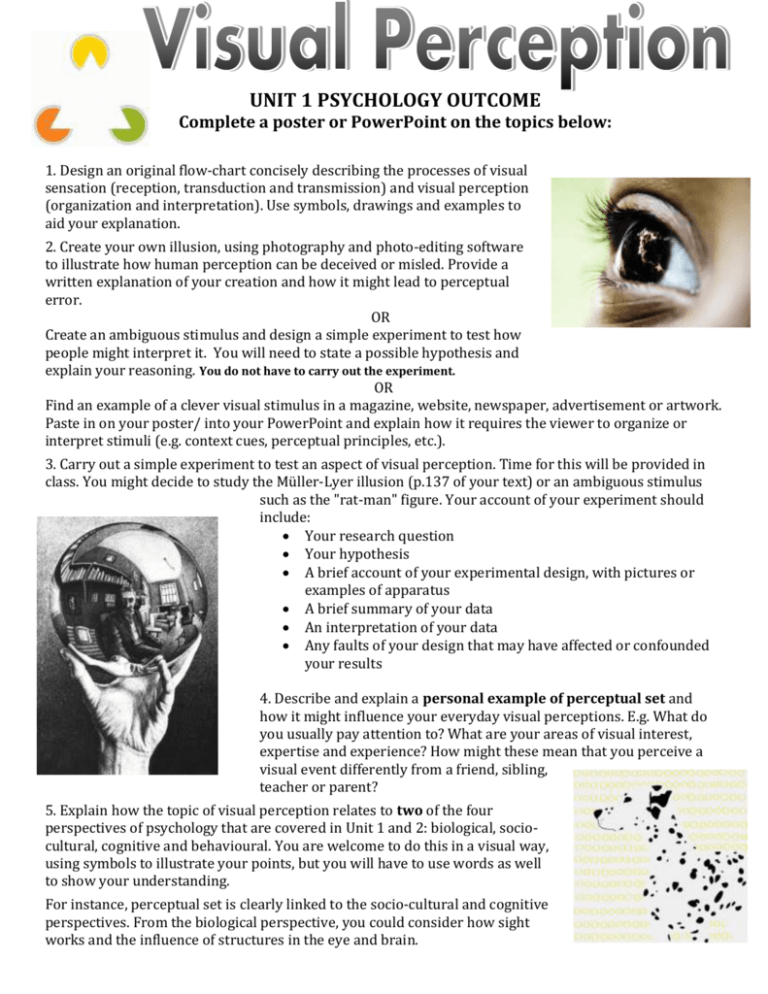
UNIT 1 PSYCHOLOGY OUTCOME Complete a poster or PowerPoint on the topics below: 1. Design an original flow-chart concisely describing the processes of visual sensation (reception, transduction and transmission) and visual perception (organization and interpretation). Use symbols, drawings and examples to aid your explanation. 2. Create your own illusion, using photography and photo-editing software to illustrate how human perception can be deceived or misled. Provide a written explanation of your creation and how it might lead to perceptual error. OR Create an ambiguous stimulus and design a simple experiment to test how people might interpret it. You will need to state a possible hypothesis and explain your reasoning. You do not have to carry out the experiment. OR Find an example of a clever visual stimulus in a magazine, website, newspaper, advertisement or artwork. Paste in on your poster/ into your PowerPoint and explain how it requires the viewer to organize or interpret stimuli (e.g. context cues, perceptual principles, etc.). 3. Carry out a simple experiment to test an aspect of visual perception. Time for this will be provided in class. You might decide to study the Müller-Lyer illusion (p.137 of your text) or an ambiguous stimulus such as the "rat-man" figure. Your account of your experiment should include: Your research question Your hypothesis A brief account of your experimental design, with pictures or examples of apparatus A brief summary of your data An interpretation of your data Any faults of your design that may have affected or confounded your results 4. Describe and explain a personal example of perceptual set and how it might influence your everyday visual perceptions. E.g. What do you usually pay attention to? What are your areas of visual interest, expertise and experience? How might these mean that you perceive a visual event differently from a friend, sibling, teacher or parent? 5. Explain how the topic of visual perception relates to two of the four perspectives of psychology that are covered in Unit 1 and 2: biological, sociocultural, cognitive and behavioural. You are welcome to do this in a visual way, using symbols to illustrate your points, but you will have to use words as well to show your understanding. For instance, perceptual set is clearly linked to the socio-cultural and cognitive perspectives. From the biological perspective, you could consider how sight works and the influence of structures in the eye and brain.
